17+ Best Drama Therapy Techniques, Activities, & Exercises
 If you’re like most people, you were probably not familiar with the concept of drama therapy before landing on this page.
If you’re like most people, you were probably not familiar with the concept of drama therapy before landing on this page.
Drama therapy is an established and validated form of therapy that can be applied to a wide range of participants with an even broader range of issues, problems, and disorders.
The evidence backing its effectiveness is compelling, as is the intuitive reasoning behind its appeal.
Curious about drama therapy yet? Read on to learn what drama therapy is and why it is an intriguing form of treatment with such exciting potential.
Before you read on, we thought you might like to download our three Positive Psychology Exercises for free. These science-based exercises explore fundamental aspects of positive psychology including strengths, values and self-compassion, and will give you the tools to enhance the wellbeing of your clients, students, or employees.
This Article Contains:
- What Is Drama Therapy? Definition and History
- Techniques in Drama Therapy
- 10+ Activities, Games, Exercises, and Ideas (PDF)
- Drama Therapy Applications
- Certification and Training – Courses, Programs & Workshops (+ online)
- Drama Therapy Associations
- 5 Books on Drama Therapy
- A Take-Home Message
- References
What Is Drama Therapy? Definition and History
Drama therapy is a type of therapy that uses theatrical techniques and concepts to bring about meaningful change. It gives clients a way to express their feelings, interact with others, and rehearse healthy behaviors.
Drama therapy expert David R. Johnson (1982) defines this method of treatment as
“the intentional use of creative drama toward the psychotherapeutic goals of symptom relief, emotional and physical integration, and personal growth.”
The North American Drama Therapy Association (n.d.) describes drama therapy as an approach that:
“…can provide the content for participants to tell their stories, set goals and solve problems, express feelings, or achieve catharsis.”
It is intended to help participants explore their inner experience and break them out of any rigid roles or frameworks. They can express themselves while sharing a new side to their personality, or dig up an old one long forgotten.
Drama therapy was first conceived as a therapeutic approach called psychodrama by psychiatrist Jacob Moreno (Langley, 2006).
Psychodrama went against the grain of the current psychology, given its focus on the present and the future rather than the past (e.g., in the style of Freud and his successors).
A psychodrama session was generally organized based on the following guidelines (Logeman, 2019):
- The session focuses primarily on one person, the protagonist.
- Participants act out their emotions by reacting to others.
- Participants use techniques like mirroring the protagonist’s behavior and role reversal to better understand their feelings and behaviors, as well as the feelings and behaviors of others.
- Spontaneity and creativity are emphasized as propellers of progress and development.
After Moreno
From Moreno’s psychodrama technique, what we now call drama therapy was born. People noticed that drama facilitates the expression of difficult emotions and provides psychological distance from trauma or suffering, and they applied these truths from the world of theater to the realm of therapy.
While psychodrama focuses on an individual, drama therapy can be applied to individuals or groups and can provide therapeutic opportunities for all participants in each session (HealthPRO, n.d.).
During the 1960s, as the new focus increased on humanistic approaches, drama therapy offered psychologists a way to treat clients through theater that revolved around the actor’s experience instead of the audience’s (Johnson, 1982).
The field really began to take shape when the American Dance Therapy Association formed in 1966 with the American Art Therapy Association following soon after in 1969. The North American Drama Therapy Association (n.d.) was established in 1979.
Today, the goals of drama therapy are often described as follows (GoodTherapy, 2015):
- To promote positive behavioral changes
- To improve interpersonal relationship skills
- To integrate physical and emotional wellbeing
- To achieve personal growth and self-awareness
- To improve overall quality of life
Drama therapy also provides participants them with the opportunity to (HealthPRO, n.d.):
- Express their feelings
- Tell their story
- Act out/work out issues and problems
- Relive their symptoms
- Achieve emotional and physical integration
- Experience catharsis
- Expand their depth of inner experiences
- Boost their self-confidence
- Improve their self-esteem
- Increase their sense of play and spontaneity
- Develop trust
- Work out relationship issues
- Improve their interpersonal/social skills
- Strengthen or expand their personal life roles
- Increase their mental and emotional flexibility
Drama therapy sessions are usually organized into four separate parts (Counselling Directory, n.d.):
- The check-in
In this first component of the session, participants will check in with the therapist and share how they are feeling today. - The warm-up
The warm-up activity is meant to get the blood flowing as well as participants’ creative juices; it should help get everyone engaged, mind and body. - The main activity
This is the biggest component of the session and the focus of the therapeutic work for the day. - Closing
Closing out the session offers an opportunity to discuss how the session went for each participant and reinforce any lessons learned or objectives achieved.
Techniques in Drama Therapy
Drama therapy uses exercises rooted in theater to help participants express themselves and gain new insights about themselves and others.
The nine core processes through which drama therapy facilitates change in participants include (Jones, 1996):
- Dramatic projection
A technique that allows participants to project their inner feelings and work their issues out onto a role or object. - Personification and impersonation
Two different techniques in which participants can express their own personal material through role-play or onto an object. - Interactive audience and witnessing
Refers to the participant, the group, and/or the client in the role of audience or witness. - Playing
An attitude characterized by spontaneous problem-solving, in which a play space is staked out, objects are actively repurposed into new roles, and allowances are made for changes. - Drama-therapeutic empathy and distancing
The ability of the participants to engage or disengage with the material that resonates with their personal problems and inner conflicts. - Life-drama connection
A process in which participants analyze their personal problems or issues through dramatic projection. - Transformation
An inherent aspect of much of what happens in theater and in play, built right into the structure of telling a story. - Embodiment
The physical expression of personal material (can be actual or envisioned). - Therapeutic performance processes
The therapeutic use of theatrical performance to work through the participants’ personal issues and themes.
In addition to these core processes, other common techniques include the following.
Stimulating creativity and spontaneity
Throughout treatment, the drama therapist will try to poke, prod, and provoke the participants into developing and applying their creative nature (Johnson, 1982; Jones, 1996).
Role-play
Role-play allows the participant to alter their mindset, act out in new ways, and connect their own experiences to those of another person (whether that other is real, imagined, a near-perfect copy of the participant, or someone completely different). There are two main types of roles that a participant may play.
– Scripted role
Scripted role-playing gives the participant the opportunity to act as another person, usually based on a script or text describing the individual. The participant studies the role, attempts to understand the individual, and often finds that they can relate to certain factors in the character’s experience.
– Improvisational role
Unlike the scripted role, participants acting out an improvisational role are given minimal guidance on the character and allowed to create their personality spontaneously. The actor in an improvisational role will undoubtedly draw from their own experiences, memories, and assumptions to create a personality, making it an exercise in self-expression, whether the actor is aware of each aspect of their self that seeps through or not (Johnson, 1982).
Speech and storytelling
This technique capitalizes on the desire to tell a good story and allows us to form new narratives and practice getting our message across to others.
Talk therapy itself is a sort of storytelling, in which the client composes, alters, and refocuses their own stories with the therapist as the audience. The simple process of telling your story can bring a surprising sense of catharsis and facilitate a new understanding of yourself and your experiences.
However, storytelling can also be used to construct hypothetical (or not-so-hypothetical) situations and explore the various ways the story could end. In this technique, the client is in a position of leadership concerning the characters, the situation, and the resolution, allowing them to work through their own experiences and find healing (Miller, 2011).
Projective play
Projective play is generally used with children, although it can also be applied with adults. This technique uses dolls, toys and other props to allow participants to express and project their feelings. Projecting themselves onto the external world through play is a sign of healthy development, and failure to do so can provide valuable insights into what the participant is struggling with.
The use of props is a prominent feature in drama therapy and offers participants versatile ways to use the things around them to express themselves. Props can be used for a wide range of purposes, from simply giving the participants a tool to utilize in their role to holding symbolic meaning and representing an experience, individual, or concept.
Movement and miming
One of the most basic and fundamental human behaviors is movement. The use of movement in a therapeutic manner is also found in art therapy, interpretive dance therapy, and other activities humans devised to express themselves.
Miming is essentially movement replacing speech in acting out a scenario or portraying emotion. This technique requires the use of body language alone, which may bring up new thoughts, feelings, and perspectives for the participants (Counselling Directory, n.d.).
Acting out
This process is when participants act out negative behaviors without consequences. In this safe space, they can act out harmful behaviors and face them directly and truthfully. This technique can be especially helpful for participants with addiction issues, as they can engage in a thoughtful consideration of their addiction behaviors without actually backsliding (Blank, 2010).
In addition, acting out can be extremely helpful for participants who have engaged in other harmful behaviors or actions that have caused them problems in the past (Counselling Directory, n.d.).
Masks
Donning a mask can help participants feel safer and more secure, as well as give them another way to express themselves and share their feelings with others nonverbally.
There are four main ways in which a mask can be used in a therapeutic encounter (Landy, 1986):
- To represent two sides of a conflict or dilemma
- To express one’s identity in a group
- To explore dreams and imagery
- To express a social role
Having participants create a mask that reflects their own experiences or matches how they feel can also provide a great opportunity for them to express themselves and engage their creativity.
10+ Activities, Games, Exercises, & Ideas (PDF)
Here is a sampling of these resources, activities, games, and exercises often used in drama therapy.
Mirroring resonance: Parla (“speak”)!
In this resonance exercise, the goals are for participants to examine an inner conflict from a new perspective and develop their listening skills.
The facilitator begins by dividing the group into groups of three. The participants take turns discussing a current or past conflict. The participant discussing their conflict uses their partners’ bodies to “sculpt” the scene. The other two participants will remain frozen in their position until the sculptor says “parla.”
Once the magic word has been spoken, the scene will come alive; the two participants that make up the scene can move, talk, and act however seems most fitting. In one or two minutes, they act out the scene while the third partner watches, then freeze back into a sculpture to finish the exercise.
The point of this exercise is to mirror the conflict back to the author as clearly as possible, without trying to solve it.
You can find this exercise and more examples of resonance exercises starting on page 9 of Dr. Pendzik’s PDF resource.
Reunion
In this exercise, two participants create a scene in which they are meeting by chance at a specific time and place in an imagined future.
They start recognizing and greeting one another, then move on to talking about what they’re doing now and about the drama therapy group they were once in. The focus is on reminiscing back (to the present) on their experience in the group and what they learned, gained, or achieved during that time.
This exercise comes from Renée Emunah’s Acting for Real, and it can also be seen on page 32 of Collection of Theatre Activities and Games from Emily Nussdorfer. [Please note this link will initiate an automatic download.]
In addition to these exercises and activities, there are also other interventions utilized in drama therapy to bring about healing and positive change, such as (Whipple, 2012):
- Creating visualizations
- Creating fill-in-the-blank style improvised stories
- Role-playing with role cards
- Poetry creation
- Recitation, enactment, or interpretation of literature
- Retelling or reenacting familiar stories
- Stories told through figurines, puppets, or objects
- Story summation and titling
Drama Therapy Applications

It’s also applied in schools, prisons and assisting those with autism spectrum disorder (ASD).
In schools
Schools around the world are adding concepts and exercises from drama therapy to their curriculum, or as extracurricular activities.
One such program is Diana Feldman’s ENACT method, which places specially trained actors into classrooms to interact and engage with the students. Their goal is to create a “safe container” for students in which real-life issues can be explored and addressed.
At the pace that is right for the students, the actors present customized, real-world scenes of conflict that the students likely see in their own lives (Freeling, 2015).
Studies on the program’s effectiveness showed that it improved students’ verbal and nonverbal expression and increased their demonstrations of trust, focus, engagement, collaboration, and cooperation with peers and adults. Some schools are even seeing decreases in behavioral problems and improvements in attendance, grades, and test scores (Freeling, 2015).
In prisons
Although the idea of people who are incarcerated putting on a play might seem incongruous with the bleak, hardened view of prisons we are often presented with, the application of drama therapy techniques has proven to be a promising method of treating and rehabilitating those forgotten or shunned by society (for more general therapy techniques, see this article).
The evidence from drama therapy and theater-based programs in correctional institutions has shown often remarkable outcomes, including (Gardner et al., 2014):
- 70% of men who took part in drama workshops at Iowa’s Mount Pleasant Correctional Facility displayed significant improvements in their relationships with peers and authority figures.
- Nearly all respondents to a survey on the Theater in Prisons Project reported reduced tension in the correctional institutions, improved interpersonal and communication skills, enhanced self-confidence, and an expansion in the options people who were incarcerated felt were available to them, both inside the institution and after their release.
- Nearly 60% of participants in the Rehabilitation Through the Arts program at Sing Sing Correctional Facility in New York went on to earn a degree beyond the General Education Development diploma (GED) while incarcerated and were more likely to engage in college programs overall.
Autism and drama therapy
The use of acting, role-play, movement, body language, and communication with others makes drama therapy a great fit for those with autism spectrum disorder (ASD).
Godfrey and Haythorne (2013) explored the effects of drama therapy sessions on children and young people with ASD and found benefits that fit into five themes:
- Dramatherapy sessions gave participants a safe place to explore their feelings.
- Participants felt included and made friends with their peers in sessions.
- Role-play provided participants with a short-cut to learning about and practicing social skills.
- The predictability and structure of the sessions helped participants feel less anxious.
- The positive outcomes from drama therapy sessions permeated through the entire family and support system.
Acting out real-world situations in the safety of a theater context allows children with ASD to practice their skills, and improvisation encourages them to ditch the scripts they often rely on in social situations, fostering increased flexibility in thinking and behavior and challenging their generally concrete thinking styles (McKenna, 2016).
How drama therapy can help express emotion – Anna Beck
Certification and Training – Courses, Programs, and Workshops
Depending on the country/region where they work, most drama therapists graduate with a degree in psychology, sociology, or social work; pass a licensing exam, and register with the proper authorities.
Additional specialized training must be undertaken to become a registered drama therapist (RDT). To learn more about the process of becoming an RDT, check out the North American Drama Therapy Association’s (NADTA) information page here.
For continuing education, alternative training, or supplementation to existing training, current and aspiring RDTs can find information on NADTA’s in person and online courses by clicking here.
For another potential educational path, consider Concordia University’s master’s degree in drama therapy, which combines theater studies with various therapeutic approaches. You can find out more about the program by visiting the university’s website.
Drama Therapy Associations
As noted earlier, the North American Drama Therapy Association is the largest and most active association focused on drama therapy. To explore what they do and learn more about drama therapy, you can visit their website here.
There is also a UK association for drama therapy called the British Association of Dramatherapists. You can read more about this organization and what they do here.
5 Books on Drama Therapy
There are many books available about drama therapy can help you learn more. Check out this brief list of some popular and well-reviewed books on drama therapy:
1. Drama Games: Techniques for Self-Development – Tian Dayton
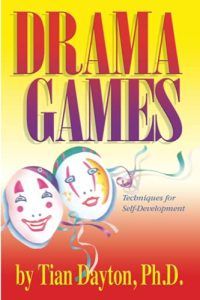
The theater games explained in this book can offer a way for readers to access their feelings while injecting humor into the process.
Find the book on Amazon.
2. Trauma-Informed Drama Therapy: Transforming Clinics, Classrooms, and Communities – Sajnani Nisha and David Read Johnson
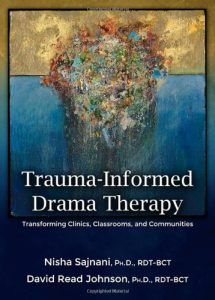
The book discusses how drama therapy can be used in clinics, classrooms, and communities, to help people express themselves and process their experiences.
The authors also provide practical guidance on how to implement trauma-informed drama therapy, including information on assessment, intervention, and evaluation.
The book is geared towards drama therapists, counselors, social workers, and other professionals who work with trauma survivors.
Find the book on Amazon.
3. Acting for Real: Drama Therapy Process, Technique, and Performance – Renée Emunah
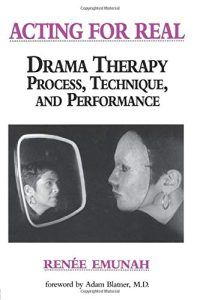
Besides the theory and techniques of drama therapy, the book provides practical guidance on how to use drama therapy in a variety of settings.
Topics such as assessment, intervention, and evaluation are discussed, in addition to detailed case studies to illustrate the various techniques.
The author also delves into the concept of “performance” in drama therapy and how it can be used to enhance the therapeutic process.
The book is intended for drama therapists, counselors, social workers, and other professionals who use drama therapy in their practice.
Find the book on Amazon.
4. The Drama Within: Psychodrama and Experiential Therapy – Tian Dayton
Aimed at psychotherapists, counselors, social workers, and other mental health professionals interested in using psychodrama and experiential therapy, this book is an ideal guide.
Tian Dayton explores psychodrama and experiential therapy as a way to help individuals and groups to overcome emotional and psychological challenges.
What makes the book interesting is that it provides an in-depth understanding of the theory and practice of psychodrama, including the use of role-playing, action methods, and other techniques.
The author provides practical guidance on how to implement psychodrama and experiential therapy in a variety of settings.
Find the book on Amazon.
5. Strengths-Based Drama Therapy with Groups – Kate Hoffower

This book explains how to approach drama therapy from a trauma-informed perspective and includes specific exercises.
The reason why we recommend this book is that is more user friendly than previously reviewed manuals, and in addition, specifically focuses on using drama therapy in groups.
Find the book on Amazon.
A Take-Home Message
In this piece, we learned what drama therapy is, covered a brief overview of its history, described some of the most salient techniques and exercises, and explored its potential benefits.
Drama therapy and other types of therapy that focus on the arts provide individuals with opportunities to heal, express themselves, share their story and connect with others.
Such forms of therapy have enormous potential for all who struggle but are particularly promising for those who are in greatest need of self-expression and healthy interaction.
What do you think is so compelling about drama therapy and other forms of therapy based on the arts? Have you ever participated in drama therapy as a therapist/facilitator or as a participant? What was your takeaway from the experience? We want to hear from you, so feel free to utilize that comment box below!
Thanks for reading!
We hope you enjoyed reading this article. Don’t forget to download our three Positive Psychology Exercises for free.
- Blank, B. T. (2010). Theater processes therapeutic in drama therapy. The New Social Worker. Retrieved from http://www.socialworker.com/feature-articles/practice/Theater_Processes_Therapeutic_in_Drama_Therapy/
- Counselling Directory. (n.d.). Dramatherapy. Counselling Directory – Art Therapies. Retrieved from https://www.counselling-directory.org.uk/drama-therapy.html
- Freeling, I. (2015). Schools ENACT positive change with drama therapy. Huffington Post Blog. Retrieved from https://www.huffingtonpost.com/isa-freeling/schools-enact-positive-ch_b_6964602.html
- Gardner, A., Hager, L. L., & Hillman, G. (2014). Prison arts resource project: An annotated bibliography. National Endowment for the Arts: Art Works Program. Retrieved from http://www.artsevidence.org.uk/media/uploads/prisonartsresourceprojectmarch2016.pdf
- Godfrey, E., & Haythorne, D. (2013). Benefits of dramatherapy for Autism Spectrum Disorder: A qualitative analysis of feedback from parents and teachers of clients attending Roundabout dramatherapy sessions in schools. Dramatherapy, 35(1), 20-28.
- GoodTherapy. (2015). Drama therapy. GoodTherapy. Retrieved from https://www.goodtherapy.org/learn-about-therapy/types/drama-therapy
- HealthPRO. (n.d.). Drama therapy. HealthPRO Natural Medicine. Retrieved from http://learn.healthpro.com/drama-therapy/
- Johnson, D. R. (1982). Principles and techniques of drama therapy. The Arts in Psychotherapy, 9, 83-90.
- Jones, P. (1996). Drama as therapy: Theatre as living. Routledge.
- Landy, R. J. (1986). Drama therapy concepts and practices. Charles C. Thomas.
- Langley, D. (2006). An introduction to dramatherapy. Sage.
- Logeman, W. (2019). Encounter: The heart of psychodramatic couple therapy. Australian and Aotearoa New Zealand Psychodrama Association Journal, (28), 35-46.
- McKenna, L. (2016). Boosting social skills in autistic kids with drama. The Atlantic. Retrieved from https://www.theatlantic.com/education/archive/2016/06/boosting-social-skills-in-autistic-kids-with-drama/485027/
- Miller, E. (2011). Notes on “Using storytelling for therapy.” World Storytelling Institute. Retrieved from http://www.storytellinginstitute.org/72.html
- North American Drama Therapy Association. (n.d.). About NADTA. Retrieved from https://www.nadta.org/about-nadta.html
- Whipple, K. (2012). Tales of transformation: Drama therapy in hospitals. Society for the Arts in Healthcare [Webinar]. Retrieved from https://www.americansforthearts.org/sites/default/files/webinar_WhippleDramaTherapy2012.pdf
Let us know your thoughts
Read other articles by their category
- Body & Brain (49)
- Coaching & Application (57)
- Compassion (26)
- Counseling (51)
- Emotional Intelligence (24)
- Gratitude (18)
- Grief & Bereavement (21)
- Happiness & SWB (40)
- Meaning & Values (26)
- Meditation (20)
- Mindfulness (45)
- Motivation & Goals (45)
- Optimism & Mindset (34)
- Positive CBT (28)
- Positive Communication (20)
- Positive Education (47)
- Positive Emotions (32)
- Positive Leadership (18)
- Positive Parenting (4)
- Positive Psychology (33)
- Positive Workplace (37)
- Productivity (16)
- Relationships (46)
- Resilience & Coping (36)
- Self Awareness (21)
- Self Esteem (38)
- Strengths & Virtues (31)
- Stress & Burnout Prevention (34)
- Theory & Books (46)
- Therapy Exercises (37)
- Types of Therapy (64)

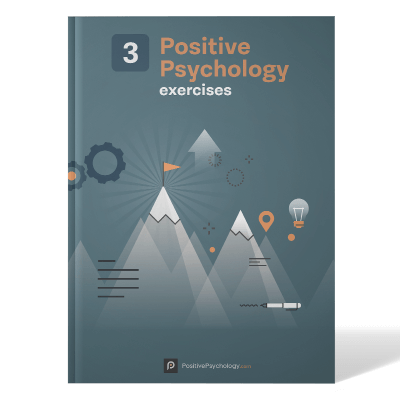


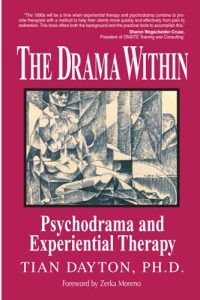



What our readers think
Hi,
I was wondering if you could possibly help me?
I was reading about Courtney Ackerman and the information about Psychodrama for children. I’m studying Holistic Arts Therapy at the moment and one of my assignments is asking me to create a 2 hour Psycho Drama Therapy class. As I’m interested in working with children when I graduate, I need to find some examples of ‘Psychodrama games for kids’ as my course outlines information about adults, not children.
I was hoping that Courtney or yourself might possibly be able to help by sending me some examples of Psychodrama games for children so that I can incorporate such into my Psychodrama Assignment?
If you could help, I would be most appreciate.
I reside in Australia and I’m having great difficulty in finding any examples.
Thank you.
Kind regards,
M.Davenport
Hi Melissa,
Thanks for reaching out. I have found this resource which shares three free projective play exercises. This source also shares the benefits of each exercise, as well as further examples of role-play and embodiment exercises.
Alternatively, we also have another article sharing 50 different Play Therapy techniques, many of which can be used with children and would be suitable for a Psychodrama Therapy Class. See the article here.
Best of luck with your class! I hope this helped.
– Caroline | Community Manager
I would like to find sources for different but similar techniques to the following one I have used in my men’s workshops. I have not been able to find other comparable processes that came anywhere near to the powerful outcomes I have seen with this. I will describe it:
It is called the Transformation Game: Setting: The group (8-10 persons) have been previously warmed up and they are familiar with each other. The facilitator begins with a sound, any sound, something deeply felt that resonates within them. As they let the feeling grow, it gets deeper and more personal; the actor gradually includes body movements, facial expressions and even very dramatic movements and expressions. When complete in the expression, the facilitator picks a person in the group, comes face to face with them and teaches them to mimic this activity. The new actor does their best to mimic the performance in all its expressions, and when satisfied with their actions they transform it into something new that they are feeling or want to feel. They perfect this performance on their own until they are satisfied and then pick someone else in the group to teach it to. This process goes on until everyone has participated. Sometimes it can go on for an hour or more, often ending in hysterics and exhaustion.
Please, if you know of powerful activities like this, refer me to them so I can use them in my work, thank you so much.
I cannot download any of the hyper links throughout the article, HELP
Hi Jeraldi,
Thank you for bringing this technical error to our attention, and sorry for the inconvenience. These links should work correctly now 🙂
– Nicole | Community Manager
This was quite helpful …I m on the path to be counsellor like u maam. Ur way of writing quite influenced me.
This is very enlightening! I enjoyed reading it. Thank you!
Very helpful.
very educative.
There is some information on this blog that is not exactly correct – in part because the information was not taken from articles BY drama therapists, but by others. For instance, while psychodrama is used by drama therapists and many of Moreno’s theories and ideas are important to drama therapists, psychodrama is an independent creative arts therapy on its own, which requires a great deal of training to practice. Drama Therapy uses fictional and nonfictional drama techniques, performance as well as group-only process-oriented situations. The founder of drama therapy in the U.S. is Austrian actress Gertrud Schattner who moved to the U.S. after WWII. A lot of the information included on drama therapy in prisons is about non-drama therapists working in prisons. One of the most successful drama therapy in school programs — besides ENACT — is the ALIVE program in New Haven and Minneapolis. The program mentioned in Lawrence, Kansas is no longer in existence as the drama therapist who ran the Therapeutic Classroom retired three years ago. Drama therapy work is done with all populations and age groups and is used as a psychotherapeutic intervention as well as a wellness method. As a side note, incorporating drama therapy into psychotherapy requires training. Because drama therapy methods are so effective at engaging clients, if you don’t understand how to utilize techniques like distancing, you can “open doors that you might not be prepared to shut,” as the great Patricia Sternberg, RDT often said.
As a response to the drama therapy process, any time you are working with a client even in a group therapy program you can open a door you may not be qualified professionally to shut say in an NA group. This is well known, but my problem is that I live in Michigan with a history of addictions therapy now working with youths that are living with bullying as well as depression in an economically stressed city. In this area or surrounding have training in the field of drama therapy because of the extent of the education as well as the having to pay back the student loans in such a low paying field. Most that have the degrees in this field are in Boston or California, with only four universities that offer the specialty. Time out for restrictions of just one organization in the last twenty years holding the requirement for the country.
Are you retired???
Hello Sally, I am a Drama teacher in Northern ireoajd- could you please give me some more information about the ALIVE program that you mention? I know it was several years ago.
Many thanks!